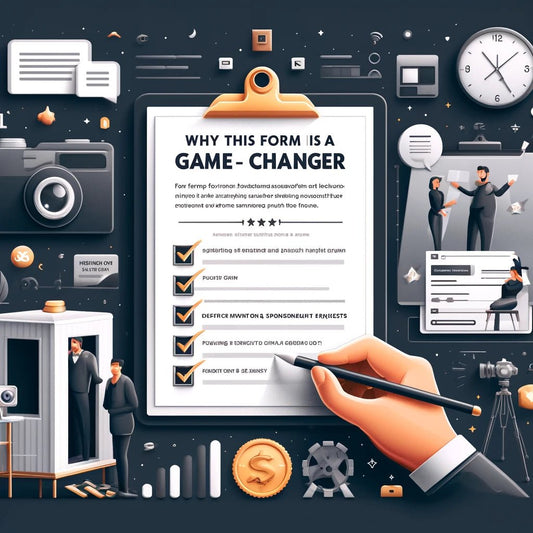
Boost Teamwork and Camaraderie with Corporate Event Team Building
Share
.jpg)
Corporate event team building is a strategic process that involves organizing activities and programs for employees within a company to promote teamwork, improve collaboration, and strengthen interpersonal relationships. It aims to enhance communication, problem-solving, and trust among team members in a fun and engaging environment.
Corporate event team building is essential for fostering a positive work culture, boosting employee morale, and increasing productivity. By bringing employees together outside of the regular work setting, it creates opportunities for them to connect on a personal level and develop a sense of camaraderie.
There are various types of corporate event team building activities, including problem-solving activities that require critical thinking and creativity, communication and collaboration activities that focus on teamwork and effective communication, and trust-building activities to build bonds and establish trust within the team.
The benefits of corporate event team building are numerous. It improves communication and collaboration among team members, enhances problem-solving skills, strengthens team relationships, and boosts employee motivation and engagement.
To plan a successful corporate event team building, it is crucial to determine the objectives and goals of the activities, choose the right activity that aligns with the company's needs, consider logistics and budget, create a positive and inclusive environment, and assess and evaluate the results to measure the effectiveness of the team building program.
In recent years, there have been trends and innovations in corporate event team building, including virtual team building activities that utilize technology for remote teams, outdoor adventure challenges that promote teamwork and physical fitness, and gamification and technology integration to make the activities more interactive and engaging.
By incorporating these trends and innovations, companies can create impactful and memorable team building experiences that bring employees closer together and contribute to a thriving work environment.
What is Corporate Event Team Building?
Corporate event team building refers to activities and exercises designed to enhance teamwork and collaboration among employees in a corporate setting. These activities aim to improve communication, trust, and problem-solving skills within a team. By engaging in team-building exercises, employees can develop stronger relationships, increase motivation, and improve overall productivity. Some common examples of corporate event team building activities include ropes courses, scavenger hunts, and problem-solving games. Corporate event team building is an essential tool for fostering a positive and cohesive work environment.
What is Corporate Event Team Building?
Why is Corporate Event Team Building Important?
Why is Corporate Event Team Building Important?
Corporate event team building is crucial for fostering a positive work environment and enhancing teamwork within an organization. It helps to improve communication, collaboration, and problem-solving skills among employees. Through team-building activities, employees can build trust, develop strong relationships, and enhance morale. This ultimately leads to increased productivity and efficiency in the workplace.
A true story that highlights the importance of corporate event team building is that of a company where teams participated in a series of team-building challenges. As a result, they were able to break down silos, work together more effectively, and achieve their goals more efficiently.
Types of Corporate Event Team Building Activities
Looking to boost team dynamics and enhance collaboration in your workplace? Discover the different types of corporate event team building activities that can fuel engagement and foster a positive work environment. From problem-solving challenges to communication and collaboration exercises, and even trust-building activities, we'll dive into a variety of exciting options. Get ready for an engaging journey where your team can grow, bond, and conquer challenges together!Problem-Solving Activities
Problem-solving activities are a vital component of corporate event team building. They play a crucial role in helping employees develop critical thinking skills, enhance problem-solving abilities, and promote effective teamwork. Here are the recommended steps for effectively incorporating problem-solving activities:
By incorporating problem-solving activities, teams can enhance their problem-solving skills and effectively work together to overcome challenges.
Communication and Collaboration Activities
Communication and collaboration activities are essential elements of corporate event team building. These activities play a pivotal role in strengthening teamwork, enhancing interpersonal communication, and fostering collaboration skills. Here are some real-life instances to illustrate this:
Engage in team building workshops: Participate in interactive sessions where teams collaborate to solve problems or accomplish tasks.
Encourage role-playing exercises: Motivate teams to assume different roles and communicate effectively to attain a shared objective.
Facilitate group discussions: Conduct open discussions that provide team members with the platform to express their thoughts, actively listen, and collectively make decisions.
Assign collaborative projects: Allocate tasks that necessitate teams to work together, distribute responsibilities, and meet deadlines.
Organize team challenges: Plan competitive activities that encourage teamwork, communication, and collaboration.
By implementing these communication and collaboration activities, teams can establish stronger bonds, enhance problem-solving skills, and achieve greater success in their work.
Trust-Building Activities
Trust-building activities are a crucial element of corporate event team building. These activities play a vital role in developing a sense of trust, cooperation, and unity among team members. Here are a few examples of trust-building activities:
- Blindfolded Obstacle Course: In this activity, team members rely on trust and effective communication to guide each other through an obstacle course while blindfolded.
- Trust Falls: Demonstrating reliance and trust in the group, one team member falls backward, counting on their teammates to catch them.
- Escape Room Challenges: Encouraging collaboration and trust in each other's abilities, participants work together to solve puzzles and escape a room.
- Team Building Workshops: These workshops focus on building trust through open communication, active listening, and shared vulnerability.
Engaging in these activities can foster trust, improve team dynamics, and enhance overall performance in the corporate setting.
Benefits of Corporate Event Team Building
Discover the transformative power of corporate event team building as we explore its manifold benefits. From improved communication and collaboration to enhanced problem-solving skills, strengthened team relationships, and boosted motivation and engagement, each sub-section will unveil fresh insights into how these activities can revolutionize your corporate environment. So, prepare for a journey where teamwork takes on a whole new meaning, paving the way for success and growth in your organization.Improved Communication and Collaboration
- Enhanced communication and collaboration are the primary outcomes of corporate event team building activities. These activities play a vital role in fostering open communication channels and encouraging collaboration among team members, thereby promoting effective teamwork.
- Icebreaker games are one example of team building activities that are designed to break down barriers and stimulate interaction among team members, ultimately contributing to improved communication and collaboration.
- Problem-solving activities, which require brainstorming and cooperation to find solutions, are another effective way to enhance communication and collaboration within a team.
- Team building activities such as group projects and simulations emphasize teamwork and coordination, fostering improved communication and collaboration among team members.
- Engaging in collaborative challenges, including escape rooms or outdoor adventure activities, can significantly improve communication and collaboration within a team.
- Communication exercises that focus on active listening, clear communication, and conflict resolution are specifically designed to enhance communication and promote collaboration among team members.
By actively participating in these team building activities, teams can enhance their ability to communicate effectively, collaborate efficiently, and work together towards achieving common goals.
Enhanced Problem-Solving Skills
- Enhancing problem-solving skills through corporate event team building can lead to improved productivity and innovation within an organization.
- Here are some steps to promote enhanced problem-solving skills through team building activities:
- Encourage brainstorming sessions to generate a variety of ideas and solutions.
- Facilitate group discussions to analyze problems from different perspectives and promote critical thinking.
- Assign problem-solving challenges that require teamwork and collaboration to find effective solutions.
- Incorporate role-playing exercises to simulate real-life scenarios and enhance problem-solving abilities.
- Provide opportunities for teams to learn from past mistakes and reflect on alternative approaches.
- Offer training workshops or seminars on problem-solving techniques and strategies.
- By implementing these steps, employees can develop and strengthen their problem-solving skills, contributing to a more efficient and innovative workplace.
Strengthened Team Relationships
Strengthening team relationships is an essential outcome of corporate event team building activities. It nurtures a sense of camaraderie and trust among team members, which leads to enhanced teamwork and unity. Here are some effective ways to strengthen team relationships:
|
Pro-tip: To continuously strengthen team relationships and foster a positive work culture, it is advisable to encourage regular team building activities.
Boosted Motivation and Engagement
Boosted Motivation and Engagement
Boosted motivation and engagement are vital for the success of corporate event team building. To achieve this, here are some strategies:
- Set clear goals: Clearly define the purpose and expectations of the team building activity, which can contribute to boosted motivation and engagement.
- Create a positive environment: Foster a supportive and inclusive atmosphere that encourages active participation, resulting in boosted motivation and engagement.
- Recognize and reward: Acknowledge and appreciate team members' efforts and achievements during the event, enhancing their motivation and engagement levels.
- Encourage collaboration: Promote teamwork and cooperation through interactive activities that require group problem-solving, leading to boosted motivation and engagement.
- Provide meaningful challenges: Incorporate tasks that stretch individuals' abilities and stimulate their desire to succeed, consequently boosting their motivation and engagement.
By implementing these techniques, you can enhance motivation and engagement, resulting in a more successful and impactful corporate event team building experience.
How to Plan a Successful Corporate Event Team Building?
Looking to plan a successful corporate event team building? Let's dive into the key elements you need to consider. We'll explore how to determine objectives and goals, select the perfect activity, handle logistics and budget, foster a positive and inclusive environment, and evaluate the results. Get ready to boost engagement, collaboration, and morale in your team while creating memorable experiences. Let's delve into the essentials of corporate event team building for a successful and impactful event.Determine Objectives and Goals
- Evaluate your team: Determine objectives and goals by assessing the strengths and weaknesses of your team members to identify the skills or areas that need improvement.
- Identify desired outcomes: In order to determine objectives and goals, evaluate what you want to achieve through the team building activity. It could be enhancing communication, building trust, improving problem-solving skills, or fostering collaboration.
- Set specific goals: I nclude objectives and goals by defining clear and measurable outcomes that align with the desired results. For example, increase team communication by 20% or solve a specific problem within a given timeframe.
- Cater to team preferences: Make sure to incorporate objectives and goals that consider the preferences and interests of your team. Choose an activity that aligns with their interests and is engaging for everyone involved.
- Consider time and resources: When determining objectives and goals, take into consideration the time availability and budget constraints to plan the team building activity accordingly.
Choose the Right Activity
Choosing the right activity for a corporate event team building is crucial for its success and effectiveness. It is important to consider the objectives and goals of the event, as well as the preferences and needs of the team members. Here are some factors to keep in mind when choosing the right activity:
| 1. Team dynamics: | Consider the size of the team, the level of interaction required, and the team's previous experiences with team building activities. |
| 2. Skill development: | Identify the specific skills or areas for improvement that the activity should focus on, such as problem-solving, communication, or leadership. |
| 3. Engagement and interest: | Choose an activity that will be engaging and interesting for the team members, taking into account their individual preferences and interests. |
| 4. Time and logistics: | Consider the available time for the activity, as well as any logistical constraints such as location, resources, and budget. |
| 5. Diversity and inclusivity: | Ensure that the chosen activity is inclusive and caters to the diverse backgrounds and abilities of the team members. |
By carefully considering these factors, you can choose the right activity that will help foster team cohesion, develop skills, and create a positive and productive work environment.
In a true historical example, a company called X-Force Events organized a team building activity that involved recreating the famous D-Day landing at Omaha Beach in Normandy, France. This immersive experience allowed team members to work together, face challenges, and build strong bonds while honoring the bravery and sacrifices of those who took part in the historical event.
Consider Logistics and Budget
When planning a successful corporate event team building, it is crucial to consider logistics and budget. Here are some steps to guide you:
Estimate the number of participants and select a suitable venue.
Research and compare costs of different team building activities.
Create a detailed budget, factoring in costs for transportation, meals, and any additional expenses.
Consider the logistics of the event, such as timing, scheduling, and equipment requirements.
Explore sponsorship opportunities or seek discounts to help manage costs.
Regularly review and update the budget throughout the planning process.
By considering logistics and budget, you can ensure a well-organized and cost-effective corporate event team building experience. Remember to make informed decisions and prioritize the needs and preferences of your team members.
Create a Positive and Inclusive Environment
Creating a positive and inclusive environment is crucial for a successful corporate event team building experience. Here are some key strategies to achieve this:
Assess and Evaluate the Results
To successfully assess and evaluate the outcomes of a corporate event team building activity, it is crucial to gather feedback from the participants and key stakeholders. This feedback can be collected through surveys, interviews, or focus groups. By carefully analyzing this feedback, you will be able to determine the effectiveness of the activity in achieving the desired objectives and goals. Moreover, it will help you identify any areas that require improvement and allow you to make necessary adjustments for future events.
For instance, let's say a company arranged a team building activity that focused on enhancing problem-solving and communication skills. Following the event, they conducted surveys to assess the satisfaction of the participants and gathered feedback on the significance and effectiveness of the activities. Based on the received responses, they made necessary modifications to further enhance future team building events.
Trends and Innovations in Corporate Event Team Building
Trends and innovations in corporate event team building continue to reshape the landscape of professional development. Get ready to explore the exciting world of virtual team building activities, outdoor adventure challenges, and gamification with integrated technology. Discover how these dynamic approaches are revolutionizing the way teams bond and grow. Unleash your team's potential with these cutting-edge strategies that are taking the corporate world by storm.Virtual Team Building Activities
Virtual team building activities have gained immense popularity in the corporate world, especially due to the surge in remote work. These activities aim to promote team collaboration, communication, and connection in a virtual environment. Below are some illustrations of virtual team building activities:
These activities play a crucial role in enabling remote teams to cultivate trust, enhance communication, and strengthen relationships, ultimately leading to improved overall team performance.
Outdoor Adventure Challenges
-
High ropes course: This activity involves navigating through a series of obstacles and elements, such as rope bridges and zip lines, while harnessed high off the ground. It challenges participants to trust each other and work together to overcome their fears.
-
Wilderness survival: Participants are placed in a simulated wilderness survival scenario where they must work as a team to build shelters, start fires, and find food and water. This activity promotes problem-solving skills and resourcefulness.
-
Orienteering: Teams are given maps and compasses and must navigate their way through a course, locating checkpoints along the way. Orienteering requires effective communication, decision-making, and map-reading skills.
-
White-water rafting: This exhilarating activity involves navigating fast-flowing rivers in inflatable rafts. It requires coordination, teamwork, and quick decision-making to safely maneuver through the rapids.
Outdoor adventure challenges not only provide an opportunity for team members to bond and develop stronger relationships but also foster a sense of adventure and excitement. By pushing participants out of their comfort zones and into unfamiliar environments, these activities can inspire personal growth and boost morale within the team.
At a corporate team building retreat, employees participated in a challenging outdoor adventure activity called "The Mountain Climb." They were divided into teams and tasked with scaling a steep mountain. The teams had to strategize, support each other, and conquer their fears to reach the summit. Though physically and mentally demanding, the experience brought the teams closer together, strengthening their trust, communication, and camaraderie. The success of the climb symbolized their ability to overcome obstacles and achieve greatness as a united team.
Gamification and Technology Integration
Gamification and technology integration are key trends in corporate event team building, enhancing engagement and creating a dynamic experience for participants.
- Incorporating game-like elements such as challenges, points, and rewards into team building activities can make them more enjoyable and competitive.
- Utilizing technology tools like virtual reality, augmented reality, and interactive apps can add an innovative and immersive dimension to team building, increasing engagement and interaction.
Frequently Asked Questions
What are some team building activities that can be customized for small groups?
TeamBonding offers a variety of team building activities that can be customized for small groups, such as the Minute to Win It challenge, the Cardboard Boat Building Challenge, and the Sketch Comedy Workshop.
How can team building events help in company transitions and developing a new vision?
Team building events, like Siemens' "Bridge to the Future" exercise, provide employees from different locations with the opportunity to meet and interact. This interaction fosters camaraderie and collaboration, which are essential during company transitions and the development of a new vision.
Are there any hybrid team bonding activities available for teams with both in-person and online participants?
Yes, TeamBonding offers hybrid team bonding activities that combine in-person events with online participants. This allows teams to connect and engage regardless of their location.
How does embracing failure at work contribute to team building?
Embracing failure at work encourages risk-taking and innovation. It creates a safe environment where team members can learn from their mistakes and collaborate to find solutions. This fosters trust and openness within the team, enhancing team building efforts.
Can you recommend a team building activity that involves solving a mystery?
One popular team building activity involving solving a mystery is the Clue Murder Mystery. Teams work together to solve a fictional murder by analyzing clues, questioning suspects, and using their deduction skills.
What are some ideas for office holiday parties that can boost morale?
TeamBonding offers a variety of ideas for office holiday parties that can boost morale, such as the Virtual Holiday Social, the Tasty Treats Challenge, and the Friendly Feud game show extravaganza.






